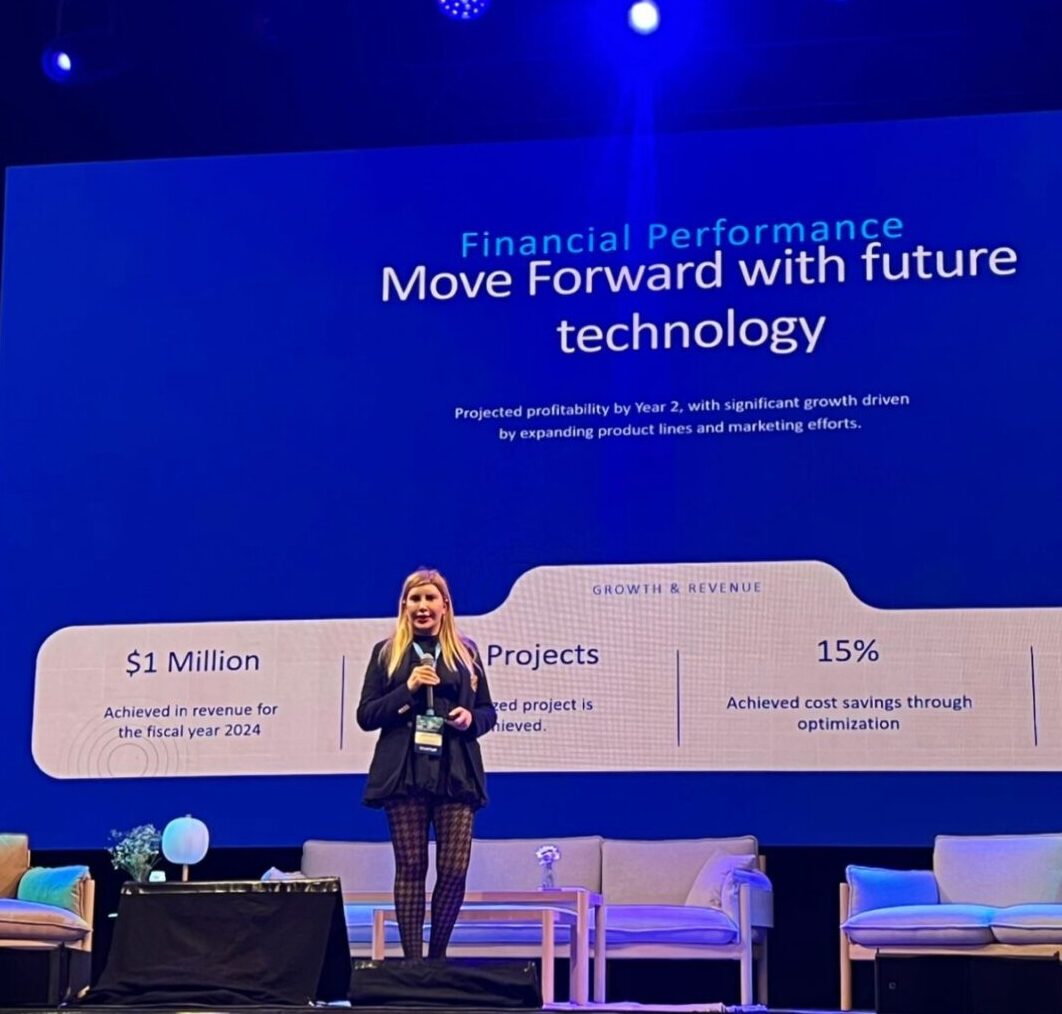Robot programming and robot technologies are one of the most important areas that need to be focused on today, where the need for automation is increasing day by day. It can even be said to be the most important. From industry to home automation, from the health sector to the entertainment sector, many different sectors and fields benefit from robot automation systems. Robot programming forms the basis of these robot automation systems.
As Nilus Engineering, in this article, we will examine robot programming, which forms the basis of robot automation systems, in depth and talk about the 10 most popular robot programming languages.
Robot Systems and Robot Programming
Robot systems are mechanical and automated systems programmed to perform routine and repetitive tasks. Robot systems, also called robot automation systems, are used in a wide range of industries from industrial production to many different sectors. The process of creating software that enables robot systems to perform their tasks is called robotic programming. Robot programming, also called robotic coding, enables robots to detect environmental data and perform various specific actions in accordance with a specific algorithm.
Robot programming aims to control the behavior of robots in accordance with a specific purpose. To achieve this, robot programming software and robot programming languages are used. Thanks to these robotic coding languages, data from the robot’s sensors are processed and the appropriate response to the situation is provided. In addition, robot programming can increase the learning capacity of robots and enable them to perform different tasks.
Most Popular Robotic Coding Languages
Many robotic coding languages are used in the robot programming process. Each of these robot coding languages has different advantages and disadvantages. The 10 most popular robot programming languages used in 2024 can be listed as follows:
Python
Python is one of the most preferred languages in the world of robotic programming. Thanks to its easy readability and wide library support, it is ideal for robotic applications. Common robotic software frameworks such as ROS (Robot Operating System) offer Python support.
C++
C++ is frequently used in robot coding due to its high performance and low-level hardware control. For critical tasks such as real-time operations and resource management, C++ is an ideal choice.
Java
Java is known for its wide API support. It is used in robotic applications, especially in mobile and web-based control systems. Java’s platform independence makes it easy to integrate with various devices.
MATLAB
MATLAB is a powerful tool used in robot programming. It is especially used in robotic control systems and simulations. MATLAB’s extensive toolboxes for robotic systems allow engineers to easily develop complex algorithms.
LISP
LISP is a somewhat old but powerful language used in artificial intelligence and robotics research. It is ideal for symbolic calculations and algorithmic solutions. It still has an important place in robotics software development.
VHDL
VHDL (VHSIC Hardware Description Language) is used for hardware design and low-level control of robotic systems. It is preferred for programming FPGAs and other hardware components.
C#
C# is a language developed by Microsoft and is especially used in Windows-based robotic applications. Thanks to its integration with game engines such as Unity3D, C# is also used in robot simulations.
JavaScript
JavaScript is used especially in web-based robotics applications. Together with technologies such as Node.js, it is suitable for building real-time data processing and control systems.
Scratch with Raspberry Pi
Scratch is a visual programming language developed for educational purposes and is ideal for teaching robot programming to children and beginners, especially when used with the Raspberry Pi.
Arduino C
Arduino C, used on the Arduino platform, is a simple and easy-to-learn robot programming language. It is widely preferred for hobby projects and small-scale robotic applications.
Robotic Programming with Nilus Engineering
Nilus Engineering is an engineering company specialized in robot programming. Developing robot automation systems, Nilus offers customized solutions for different needs, especially in the field of industrial robots. Nilus Engineering’s team of experts in robot programming has a deep knowledge of industrial automation and robot automation systems.
Nilus Engineering’s robotic programming approach prioritizes flexibility and efficiency. It aims to meet the specific needs of its customers by offering customized robotic solutions. When choosing the most appropriate language for robot programming, Nilus takes into account the requirements, budget and feasibility of the project.
Which Language for Robotic Coding
Which robotic programming language to use for robotic coding depends on the project and its requirements. Python is ideal for beginners and rapid prototyping with its easy learnability and wide library support. C++ is preferred for applications requiring low-level hardware control and high performance. Java is known for its portability and wide API support, while MATLAB is a powerful tool for robotic control systems and simulations.
For educational projects, Scratch and Arduino C are excellent choices for teaching robot programming to beginners. For projects that require hardware design and low-level control, VHDL stands out. When deciding which robot coding language to use in your projects, it is important to carefully consider the advantages of the language and the requirements of your project.
What Can Be Done With Robotic Coding
Robotic coding can be used in various fields of industrial automation. The areas where you can benefit from the automation power of robot programming are as follows:
- Industrial Robots
- Medical Robots
- Education Robots
- Home Automation
- Research and Development
- Autonomous Vehicles
- Hobbies and Entertainment
- Industrial Automation
- Industrial Robots
Industrial robots perform tasks such as material handling, assembly, welding and quality control on the production line. Robot programming enables these robots to operate precisely and efficiently.
Medical Robots
Medical robots are used in various fields from surgical operations to rehabilitation and patient care. Robotic coding is very useful for medical robots to perform precise and surgical tasks.
Education Robots
Educational robots are used to teach students robotics and programming skills. Thanks to robotic coding, educational robots offer students an interactive and fun learning experience.
Home Automation
Home automation systems provide automatic control of devices and systems in the home. Smart home devices that work seamlessly with robotic coding are developed.
Research and Development
Robotic coding plays an important role in robotics research and the development of new technologies. Researchers use robotic programming to develop new algorithms and systems.
Autonomous Vehicles
Autonomous vehicles are vehicles that can move on their own and make decisions by sensing environmental data.
Hobbies and Entertainment
Hobby robots and recreational robots are used to realize various fun and creative projects with robotic coding. These robots offer users practical experiences in the world of robotics.
Benefits of Robot Programming
Robot programming plays an important role in today’s industry and offers many benefits. Robots have the ability to perform tasks faster, more precisely and more consistently than workers. In this way, they provide a significant increase in productivity in production processes.
Robots can perform operations without interruption and without fatigue, thus increasing production capacity. Furthermore, robots are easy to program and their operating speed is easy to adjust, so it is possible to adjust the production speed according to demand.
Defects caused by human error can negatively affect product quality. Robots, on the other hand, perform consistently as programmed and can minimize errors. Especially in precise and repetitive operations, robots offer a higher level of accuracy than human workers. This contributes to improved product quality and increased customer satisfaction.
Although robots have high initial investment costs, they provide significant savings in the long run. Robots reduce labor costs, lower energy consumption and minimize waste generation. In addition, robots have low maintenance and repair costs. Therefore, the use of robot programming significantly reduces production costs and increases the competitiveness of companies.
Dangerous, heavy or monotonous tasks can be delegated to robots. In this way, the risk of injury to workers can be reduced and safety levels increased. Robots can work in environments that can threaten human health, minimizing the risks to workers. Furthermore, robots can carry heavy loads or perform delicate operations that human workers cannot.
The Future of Robot Programming
In the future, AI integration will enable the development of more intelligent and autonomous robots. Robots will have the ability to learn, make decisions and adapt thanks to AI algorithms, which will allow more complex tasks to be delegated to robots.
Increased human-robot collaboration is another benefit that the future will bring to the field of robotic coding. Humans and robots will work more closely, and robots will be designed to ease the workload of human workers and increase productivity. Safety, ease of use and intuitive interfaces will be key to this collaboration.
It can also be said that mobile robots will become widespread in the future. In addition to fixed-position industrial robots, autonomous and mobile robots will be used in logistics, transportation, retail and service sectors. Mobile robots will be needed in areas such as material handling in warehouses, domestic tasks or facility security.
Robot collaboration systems will evolve. Multiple robots will be able to work in coordination for a purpose. This will enable more complex operations and increase productivity.
For more detailed information about the future of robot programming, you can check out our article Everything About Robot Programming.
Robot Programming Training
The importance of robot programming education is increasing day by day. The use of robots is becoming widespread in many areas from production sectors to service sectors. Therefore, the need for qualified robot programmers is also increasing. The skills acquired through robot programming education are of great importance for today’s and future business world.
Thanks to robot programmers, production processes can be optimized and efficiency can be ensured through the correct programming of robots. At the same time, thanks to the effective use of robots, labor costs can be reduced and costs caused by human errors can be reduced.
The correct programming of robots will also maximize employee safety and allow the transfer of most of the dangerous jobs to robots.
In short, robot programming training is of great importance in terms of increasing productivity in production, reducing costs, improving quality, creating new business opportunities and developing innovations. For this reason, it is becoming more and more in demand and widespread.
For more detailed information on robot programming education, you can check out our article Everything About Robot Programming.
Summary
Robot programming is a rapidly developing and expanding area of the modern world. The various programming languages used to improve the functionality and efficiency of robotic systems should be chosen according to the specific requirements of the projects. Popular robotic coding languages such as Python, C++, Java and MATLAB occupy an important place in the world of robotic coding. Nilus Engineering offers successful solutions in robot automation systems by ensuring the most efficient use of these languages and robotic systems.
Robotic coding finds a wide range of applications from industrial automation to medical robots, from educational robots to autonomous vehicles. Therefore, developing robotic programming skills and choosing the right programming languages are vital for successful robotic projects. Take your place in the world of the future with robot programming and take advantage of the unlimited opportunities offered by robotic technologies.






